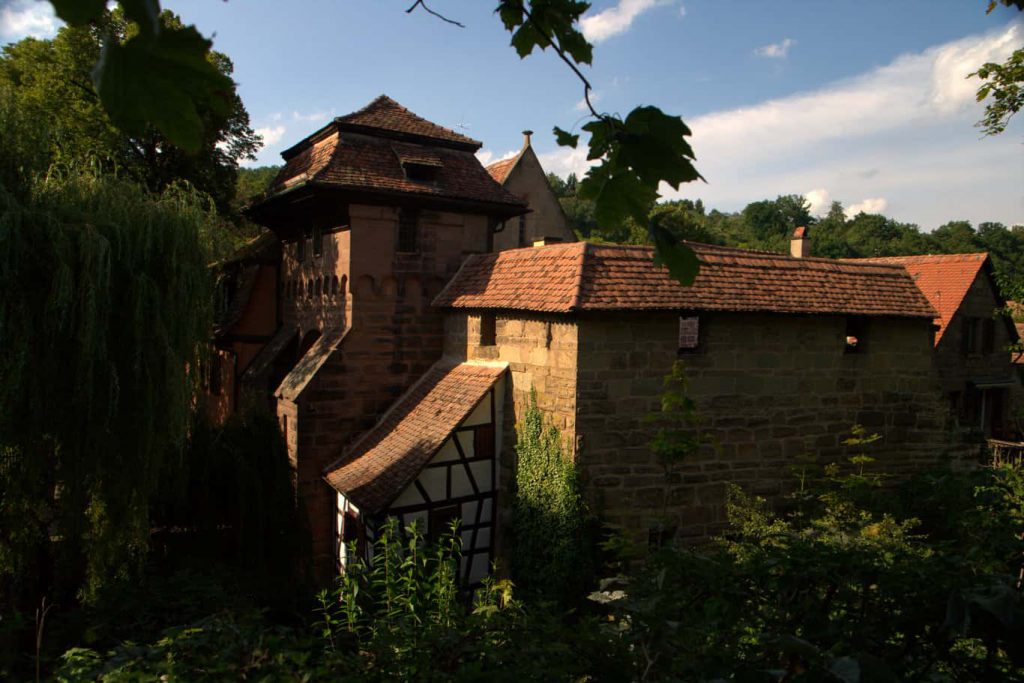Legend says monks have been looking for a place for a new monastery . Accompanied by a mule they wandered through the woods . At the place where their mule stopped to drink, they decided to build the monastery and called it Maulbronn (= Fountain of the Mule) .
Nevertheless, in the vault of the fountain house of the monastery a mule is imaged .
Maulbronn is the best-preserved medieval Cistercian monastery in Europe and has the status of a UNESCO world heritage site.
The Maulbronn Monastery was established in 1147 by the bishop of Speyer named Guenther von Henneberg after a failed foundation at another place short before.
During the time of Lutheran reformation in the 16th century, the monastery changed ownership and confession several times.
In the year 1504 the Lutheran duke Herzog Ulrich von Wuerttemberg conquered Maulbronn.
In 1525 during the German Peasant’s War, the place was conquered and plundered by poorly armed peasants and farmers. Luckily, they didn’t burn it.
In 1537 the catholic monks had to leave the monastery because the duke of Wuerttemberg became lutheran and didn’t accept catholic priests in his area.
Ten years later 1546, after the loss of the Schmalkaldic War, the property was returned to the catholic church.
Again ten years later, 1556 it came under the influence of the duke of Wuerttemberg again. He decided to establish a school in the buildings. From this time on, with some short breaks, the monastery was a lutheran school.
The school exists until today. The most famous pupils of Maulbronn were Johannes Kepler, Friedrich Hoelderlin und Hermann Hesse.
Even the last one, most famous for having been there, Hermann Hesse, did spend just one year before he fled from the obviously uncomfortable environment. Nevertheless, you can get most of the books of Hermann Hesse in the small bookshop inside the walls of the monastery area.
The whole complex with church and several buildings is surrounded by a wall. Other buildings host the police station and the city council of Maulbronn.
As another legend claims, the famous German dish „Maultaschen“ were invented in Maulbronn, too. That’s some kind of pasta filled with minced meat and other stuff. You can read the story here –> Maultaschen
There are several restaurants in the area of the monastery including a brewery, where you can eat some Maultaschen, if you are hungry.
Maulbronn is around 40 km east of Karlsruhe and around 90 km south of Heidelberg. From Karlsruhe you can reach it using public transportation starting at the Hauptbahnhof. The fastest connection by train and bus takes around one hour.
